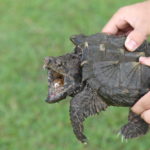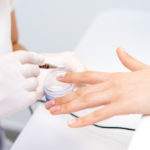This has been a promise of the future for years: Get into your self-driving car without any worries and travel automatically from point A to point B. Unfortunately, things aren’t going well yet: Since 2016, there have been 14 deaths and 59 injuries in Tesla self-driving cars due to software problems.
The high number of accidents involving Tesla’s self-driving cars prompted The Wall Street Journal to investigate the technology the brand uses for these cars. This revealed that the 200 accidents were primarily related to the camera system used by Tesla.
Accidents with Tesla
Where other car brands rely on more precise LIDAR, a radar system that bounces laser pulses off objects to locate and measure them, Tesla relies entirely on cameras. Cheap video cameras record what’s happening on the road and ensure the car intervenes when necessary.
According to Tesla founder Elon Musk, these cameras are more than enough to get self-driving cars on the road safely. In response to (fatal) accidents, the car company often puts the onus on the driver. There are currently no plans to use more than camera systems.
Car without LIDAR system
Without LIDAR, Tesla’s system is not currently good enough to classify cars as self-driving, says Dario Gavrilla, professor of intelligent vehicles at TU Delft. According to him, Tesla’s system, which relies on camera technology and machine learning, is very limited.
“With machine learning, the system can detect things that it has seen examples of before, and the cars are trained using the examples,” he explains. According to Gavrila, who has been working on environmental sensing for cars using smart sensors for more than 25 years, this only works well for things that occur frequently and for which there are many examples. “Pedestrians, cars, traffic lights, typical traffic situations.”
There is no real autopilot.
“But,” he continues, “if a refrigerator falls off a truck or a car flips upside down, the system has few examples of that. And that goes wrong quite often, especially if you combine it with the limitations of camera technology.”
He stresses that Teslas are not true self-driving cars. “The driver still has to check the system and monitor the road. The system can drive itself 99.99 percent of the time, but in those other cases things go wrong. And then the driver has to be prepared to intervene.”
Expanding technology
According to the professor, there are two things Tesla could add to improve the system. “First, use multiple sensors. In addition to cameras, there are also radars. These work on different measurement principles and can also detect random obstacles.”
“Secondly: not only focusing on AI technology, but also on classical robotics technologies that use more engineering knowledge.”
The highway is full of autopilots.
Ultimately, the professor is in favor of self-driving cars. He even believes that, ideally, they could make us safer on the road.
He also sees a future where we can no longer ignore these types of cars. “For me, the question is not if we will have full self-driving technology, but when,” Gavrila says.
Asking? Ask them!
Have any questions or want answers? Send us a message here in the chat. We tell you every Thursday in the Get Involved newsletter what we’re doing with all the answers. Want them in your inbox? Then sign up here.





